Jaipur, the capital city of Rajasthan, India, is known for its rich history and culture. From its early days as a planned city founded by Maharaja Jai Singh II in 1727, to its modern status as a bustling metropolis, Jaipur has seen many changes and developments over the centuries. With its impressive monuments, vibrant culture, and warm hospitality, Jaipur attracts visitors from all over the world.
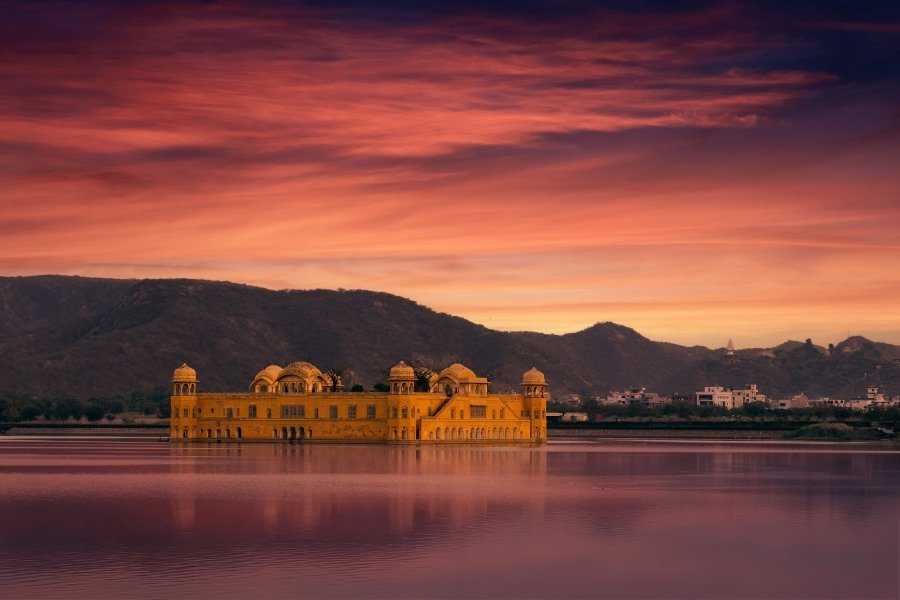
In this article, we will take a journey through the ages and explore the fascinating history of Jaipur, from its inception to the present day. We’ll delve into the city’s royal past, its role in India’s fight for independence, and the challenges it faces as a modern city. Join us as we trace the captivating story of Jaipur, a city that has stood the test of time and continues to inspire and enchant visitors to this day.
Jaipur was known as Jainaagara
Jaipur was founded in 1727 by Maharaja Jai Singh II, the ruler of the Kachwaha Rajput dynasty. He was a great patron of the arts and sciences and was particularly interested in astronomy. Jai Singh II chose the location of Jaipur carefully, taking into account various factors such as water supply, climate, and defense. The city was designed by Vidyadhar Bhattacharya, a Bengali architect, and was built according to the principles of Vastu Shastra, an ancient Indian system of architecture.

Originally, Jaipur was known as “Jainagara” because a large number of Jains lived in the area. Later, it was named “Jaipur” in honor of its founder, Maharaja Jai Singh II. Jaipur was built in a grid pattern, with wide streets and well-planned neighborhoods. The city was divided into nine blocks, each with a market or bazaar at its center.
One of the most distinctive features of Jaipur is its pink buildings. In 1876, the city was painted pink to welcome the Prince of Wales, and the tradition has continued ever since. The color is said to represent hospitality and has become one of Jaipur’s most recognizable features.
Despite facing various challenges over the years, including droughts and invasions, Jaipur has survived and thrived. Today, it is a vibrant and bustling city that retains its royal heritage while embracing modernity.
Rulers of Jaipur – Maharaja Jai Singh to Man Singh
The Kachwaha Rajput dynasty, which ruled over Jaipur, had a long line of kings who played a significant role in shaping the city’s history. Maharaja Jai Singh II, who founded Jaipur in 1727, was one of the most influential kings of the dynasty.
Jai Singh II was a patron of the arts and sciences and had a keen interest in astronomy. He commissioned the construction of several observatories, including the famous Jantar Mantar in Jaipur. The observatory was completed in 1734 and is still in use today, making it one of the oldest and largest observatories in the world.
Jai Singh II was also a skilled warrior and led his army in several battles. He formed alliances with other Rajput rulers and successfully fought against the Mughal Empire. Under his leadership, Jaipur became a prosperous and thriving city, with a strong economy and a rich cultural heritage.
After Jai Singh II, several other kings of the Kachwaha Rajput dynasty ruled over Jaipur, each leaving their mark on the city. The kings were known for their patronage of the arts, including music, dance, and architecture. They commissioned the construction of several magnificent palaces, forts, and temples, which are still standing today and are a testament to their legacy.
The last king of Jaipur, Maharaja Sawai Man Singh II, played an important role in India’s fight for independence. He was a close associate of Mahatma Gandhi and actively supported the independence movement. After India gained independence in 1947, the princely states were integrated into the Indian Union, and the role of the king was reduced to a ceremonial one.
Jaipur under Britishers
After India came under British rule in the 18th century, Jaipur, like many other princely states, became a protectorate of the British Empire. The British East India Company established a residency in Jaipur, and a resident was appointed to oversee the administration of the state.
Under British rule, Jaipur saw significant modernization and development. The British introduced new technologies and infrastructure, including railways, telegraphs, and electricity. This led to a boom in trade and commerce, and Jaipur became a major center of commerce in Rajasthan.
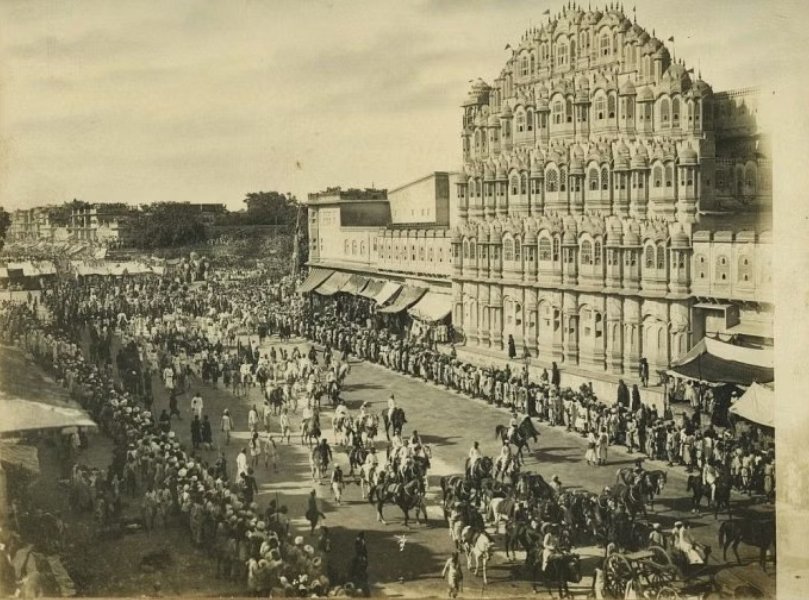
The British also had a significant impact on the architecture and urban planning of Jaipur. They introduced a new style of architecture, which combined traditional Rajasthani styles with modern European elements. This can be seen in many buildings and monuments in Jaipur, including the Albert Hall Museum and the Ram Niwas Garden.
The British also encouraged the Maharaja of Jaipur to establish schools and universities, which led to a significant improvement in education in the state. The Maharaja founded several institutions, including the Maharaja’s College and the SMS Medical College, which are still functioning today.
However, the British also imposed several restrictions on the state, including limitations on the Maharaja’s power and control over his own kingdom. This led to growing resentment among the people of Jaipur, who began to demand greater autonomy and self-rule.
The Indian independence movement gained momentum in the 20th century, and Jaipur played an active role in the struggle for independence. The people of Jaipur participated in protests and demonstrations, and several prominent leaders, including Maharaja Sawai Man Singh II, supported the independence movement.
Jaipur after Independence
After India gained independence in 1947, Jaipur, like other princely states, became part of the Indian Union. The Maharaja of Jaipur, Sawai Man Singh II, played an important role in the integration of Jaipur into the new nation.
Under the Indian government, Jaipur saw significant growth and development. The government introduced several policies aimed at promoting economic growth and social development, including land reforms, industrialization, and education.
The city also underwent significant urban planning and development. In the 1960s, a new city was built on the outskirts of Jaipur, known as the “Pink City,” which was designed to accommodate the growing population and provide modern amenities. The Pink City is now one of the most popular tourist destinations in India, known for its vibrant culture, beautiful architecture, and rich history.
Monuments in Jaipur for visitors to see
Jaipur is known for its rich history and stunning architecture, and there are several monuments in the city that reflect its cultural heritage. Here are some of the most famous monuments in Jaipur:
- Hawa Mahal – Built in 1799 by Maharaja Sawai Pratap Singh, the Hawa Mahal is one of the most iconic landmarks of Jaipur. The five-story palace is made of pink sandstone and is designed to resemble the crown of Lord Krishna. The palace has 953 small windows, or jharokhas, which allow cool air to circulate and give the palace its name, which means “Palace of the Winds.”
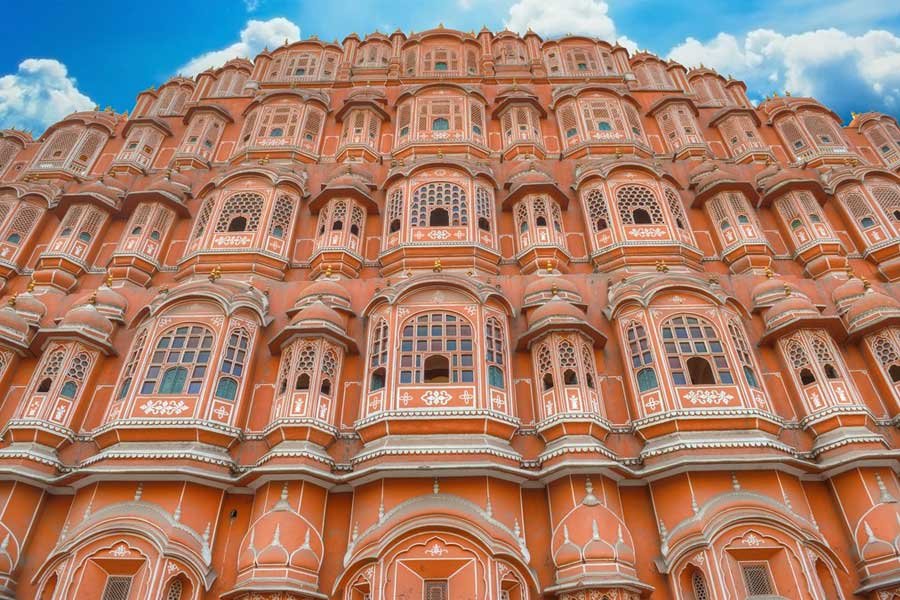
- City Palace – The City Palace is a complex of palaces, courtyards, gardens, and buildings that was built by Maharaja Sawai Jai Singh II in the 18th century. The palace is a blend of Rajasthani and Mughal architecture, and it includes several buildings such as Chandra Mahal, Mubarak Mahal, and Diwan-i-Khas. The palace also houses a museum that displays the artifacts and treasures of the Jaipur royal family.

- Amber Fort – The Amber Fort, also known as Amer Fort, is a majestic fort that was built by Raja Man Singh I in the 16th century. The fort is located on a hill and is made of yellow and pink sandstone and white marble. The fort has several buildings, including the Diwan-i-Aam, the Diwan-i-Khas, and the Sheesh Mahal. The fort is also known for its beautiful gardens, courtyards, and waterways.
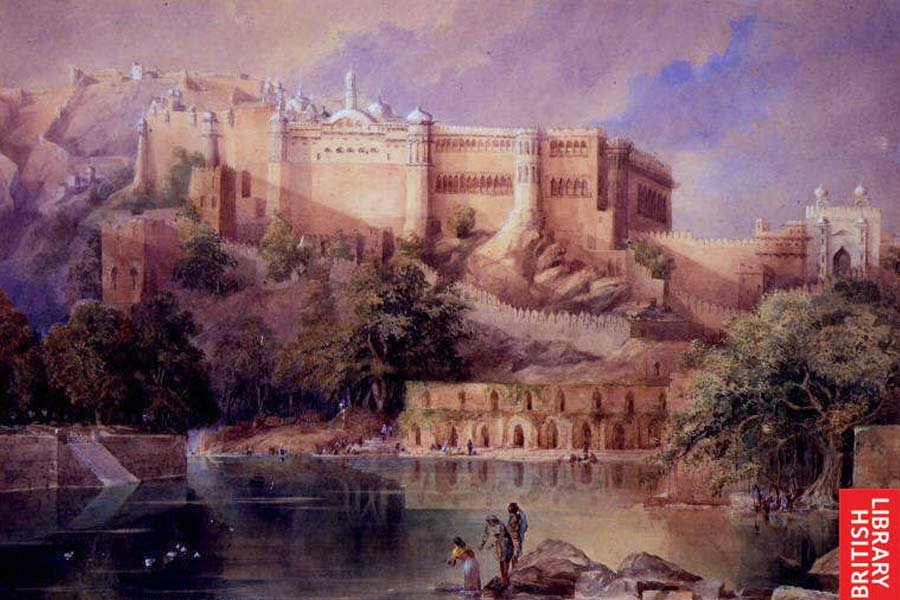
- Nahargarh Fort – The Nahargarh Fort, which means “abode of tigers,” is a historic fort that was built in 1734 by Maharaja Sawai Jai Singh II. The fort is located on the Aravalli Hills and offers a stunning panoramic view of the city. The fort has several buildings, including the Madhavendra Bhawan, which is a two-story palace that was used by the king for his summer retreats.

- Jal Mahal – The Jal Mahal, also known as the Water Palace, is a beautiful palace that is located in the middle of Man Sagar Lake. The palace was built in the 18th century by Maharaja Jai Singh II and is a blend of Mughal and Rajput architectural styles. The palace has four floors, and only the top floor is visible, while the other three floors are submerged in water.
These monuments are all architectural marvels and offer a glimpse into the rich history and culture of Jaipur. The intricate designs, carvings, and artwork of these monuments are a testament to the craftsmanship and skill of the artisans who built them. Visitors to Jaipur should not miss the opportunity to explore these incredible monuments and experience the beauty and history of the city firsthand.
Best time to visit Jaipur?
The best season to visit Jaipur largely depends on personal preference, but generally, the best time to visit is from October to March. During these months, the weather is pleasant and comfortable, with temperatures ranging from 10 to 25 degrees Celsius. The winter season from November to February is particularly enjoyable, with clear blue skies and cool evenings.
The temperature in Jaipur can vary greatly depending on the season, with average temperatures ranging from around 10 to 25 degrees Celsius during the winter months from October to March, and temperatures rising to over 40 degrees Celsius during the summer months from April to September.
What is Jaipur Famous For?
Jaipur, also known as Pink City, is famous for its rich cultural heritage, stunning architecture, vibrant markets, and delicious food. Here are some of the things that Jaipur is most famous for:
- Handicrafts – Jaipur is famous for its handicrafts, which include pottery, jewelry, textiles, and leather goods. These products are made by skilled artisans who have been practicing their craft for generations.
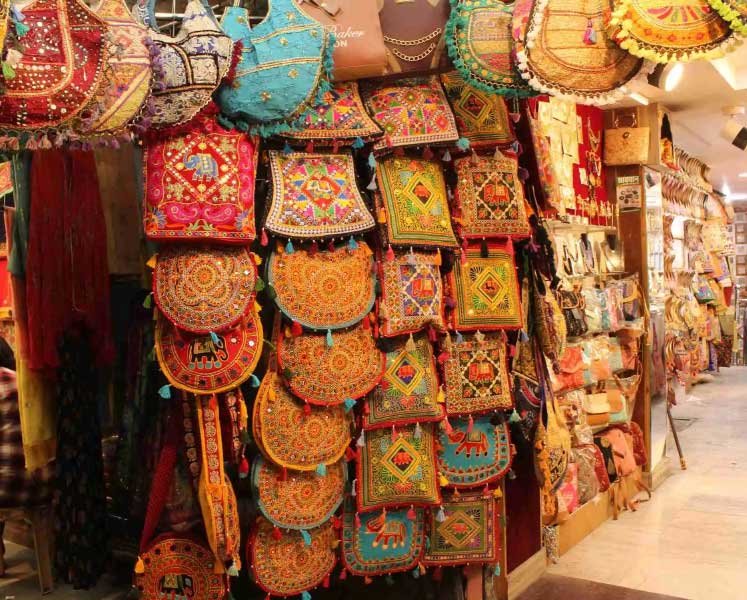
- Forts and Palaces – Jaipur is home to several historic forts and palaces, such as the City Palace, Hawa Mahal, Amber Fort, and Nahargarh Fort. These monuments are a testament to the rich history and cultural heritage of Jaipur.
- Markets – Jaipur’s markets are known for their vibrant colors and bustling atmosphere. Some of the most famous markets in Jaipur include Johari Bazaar, Bapu Bazaar, and Chandpole Bazaar. Visitors can find a variety of products, including textiles, jewelry, spices, and handicrafts.
- Food – Jaipur is famous for its delicious food, which includes traditional Rajasthani dishes such as dal bati churma, gatte ki sabzi, and laal maas. The city also has a vibrant street food scene, with vendors selling chaat, kachori, and samosas on every corner.
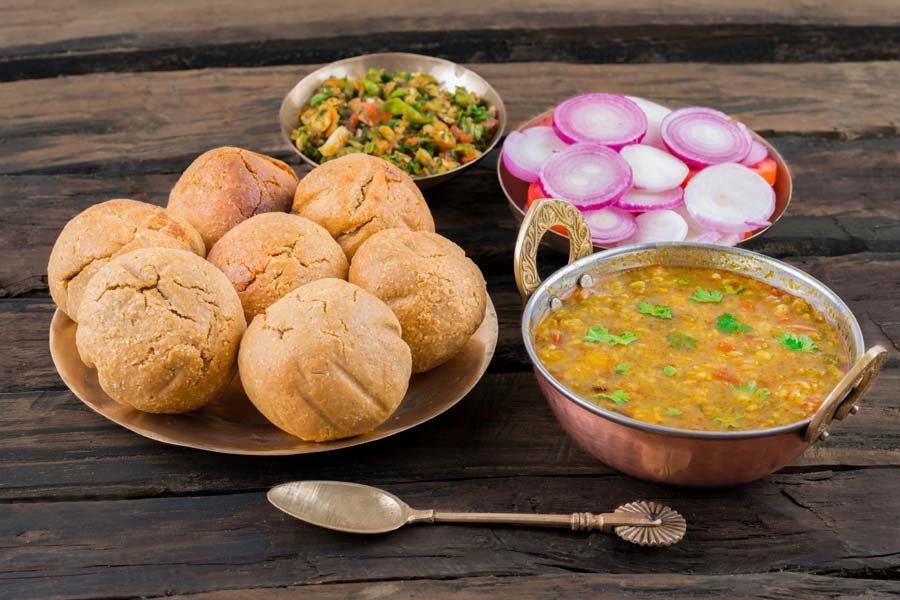
- Festivals – Jaipur is known for its vibrant festivals, such as the Jaipur Literature Festival, the Jaipur International Film Festival, and the Jaipur Elephant Festival. These festivals attract visitors from all over the world and are a celebration of the city’s rich cultural heritage.
These are just a few of the things that Jaipur is famous for. Visitors to the city can experience the rich history, culture, and traditions of Jaipur firsthand and immerse themselves in the vibrant atmosphere of this beautiful city.
In conclusion, Jaipur is a city that is steeped in history and culture. From its early days as a planned city to its present-day status as a bustling metropolis, Jaipur has remained an important center of art, architecture, and culture in India. Visitors to Jaipur can experience the city’s rich history through its beautiful monuments, explore its vibrant markets and enjoy its delicious food.
As a city that has always celebrated its cultural heritage, Jaipur is a perfect place to shop for home decor items that reflect the city’s unique aesthetic. If you’re looking for beautiful, high-quality home decor items that showcase the best of Jaipur’s traditional craftsmanship and design, look no further than Urban Jaipur. Our collection of home decor items includes everything from colorful textiles to hand-block items, and each piece is designed to bring the vibrant spirit of Jaipur into your home.
We hope that this article has given you a glimpse into the rich history and cultural heritage of Jaipur and that it has inspired you to explore this beautiful city for yourself. Whether you’re a history buff, a foodie, or a shopaholic, Jaipur has something to offer everyone. So what are you waiting for? Book your trip to Jaipur today and experience the magic of the Pink City for yourself!
